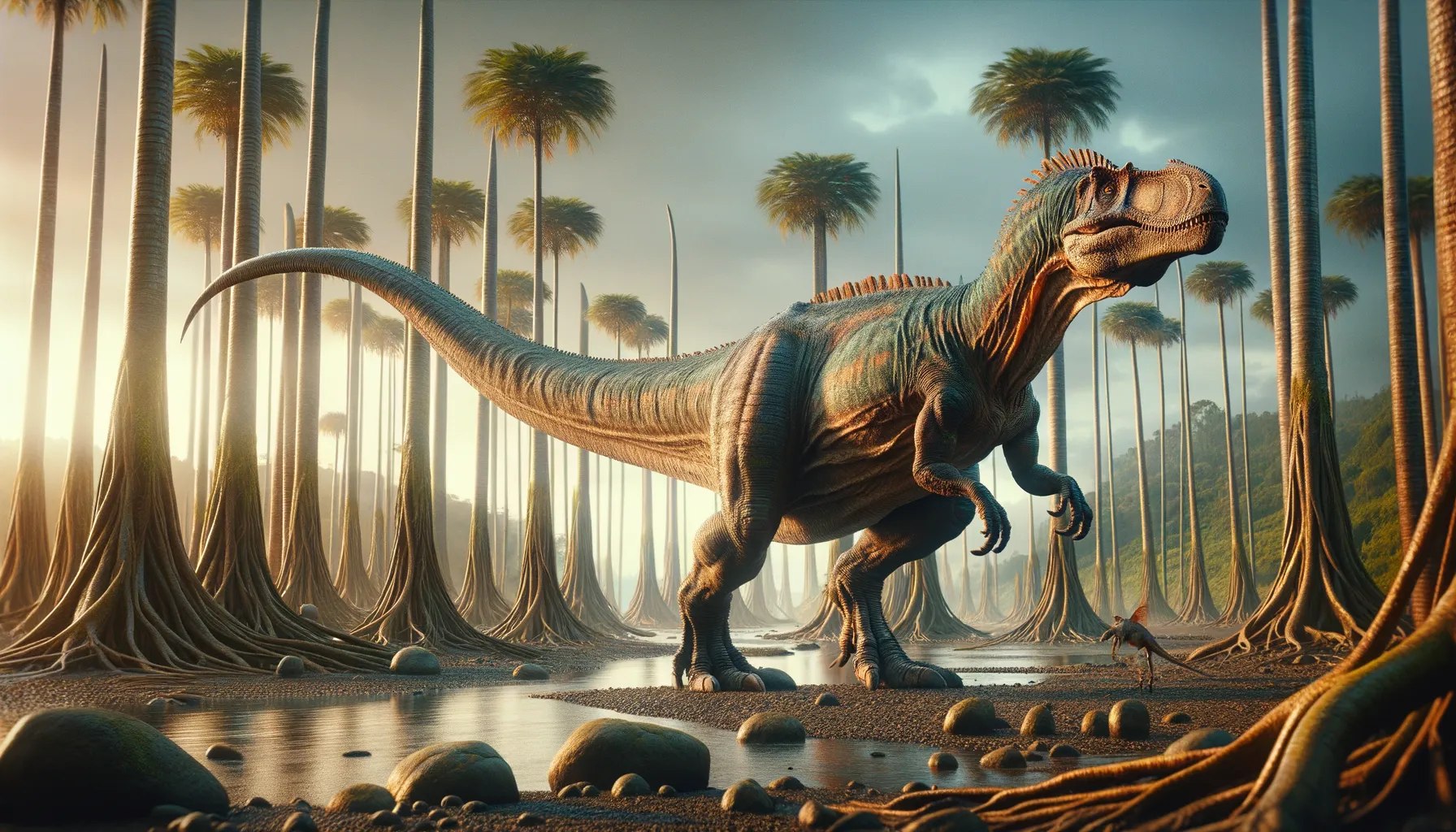
Ratchasimasaurus
Discover the giant of ancient Thailand!
Period
Cretaceous
Length
Measured approximately 15 meters from head to tail.
Height
Stood about 2 meters tall at the hip.
Weight
Estimated at around 1,000 kilograms.
Ratchasimasaurus is a large herbivorous dinosaur that roamed during the Cretaceous period. Its fossils were first uncovered in Thailand, contributing substantially to our understanding of dinosaur diversity in this region. A member of the iguanodontian family, it shared physical traits with other plant-eating dinosaurs, including a bulky, robust body and a long tail for balance. Its existence highlights the ecological variety present in ancient Asian landscapes.
Diet
Ratchasimasaurus was a herbivore, feeding on a variety of plant materials. Its diet likely consisted of leaves, fruits, and possibly seeds, supported by a broad beak suitable for cropping vegetation.
Hunting
As a herbivore, it did not engage in hunting but rather foraged for plants. It likely traveled in herds to maximize its grazing efficiency and protection against predators.
Environmental challenges
Living in the Cretaceous period, Ratchasimasaurus faced numerous challenges, including fluctuating climates and periods of drought. The diverse predators of the time also posed a constant threat. Navigating vast regions for sufficient food required adaptability to different vegetation zones and water sources.
Speed
Likely moved at moderate speeds as a large herbivore.
Lifespan
Estimated at around 30 years based on similar dinosaurs.
First discovery
First discovered in Thailand in the early 2000s.
Fun Facts
- Ratchasimasaurus is a dinosaur species discovered in Thailand, adding to the diverse list of dinosaurs from Asia.
- It lived during the Early Cretaceous period, around 125 million years ago, coexisting with a varied array of prehistoric life.
- This dinosaur is believed to be a plant-eater, or herbivore, based on the structure of its teeth and jaws.
- Ratchasimasaurus gets its name from the Nakhon Ratchasima Province where its fossils were found.
- The initial discovery of Ratchasimasaurus was made by local Thai researchers, highlighting the global nature of paleontological discoveries.
- Its name means 'Lizard from Nakhon Ratchasima,' emphasizing its geographic link to the region.
- The discovery of Ratchasimasaurus helps researchers understand more about the distribution and evolution of dinosaurs in Southeast Asia during the Cretaceous period.
Growth and Development
Ratchasimasaurus, like many large dinosaurs, underwent significant growth spurts in its early life stages. Its skeletal development was robust, accommodating its large size and weight. Over time, it developed strong limb bones to support its mass.
Habitat
Its habitat comprised lush tropical forests and open woodlands typical of Cretaceous Asia. These environments provided ample food resources and diverse ecological niches. Proximity to water bodies was crucial for hydration and nurturing its plant-based diet.
Interaction with other species
Ratchasimasaurus likely coexisted with numerous other dinosaur species, both herbivores and carnivores. It may have formed mixed herds with other plant-eaters for mutual protection. Predators preyed on weaker individuals, influencing herd dynamics.
Natural lifespan
It likely had a natural lifespan of around 30 years.
Reproduction
Ratchasimasaurus reproduced by laying eggs, like most dinosaurs. Nesting sites were likely communal, with several females depositing eggs in a single area. Parental care might have been minimal, with hatchlings quickly learning to fend for themselves.
Social behaviour
Ratchasimasaurus probably exhibited herd behavior, which provided protection and social interaction. Group living helped in alerting individuals to predators and improved foraging efficiency. Such communal living also played a role during reproduction seasons.
Fossil locations
Fossils of Ratchasimasaurus have been predominantly found in Thailand, shedding light on the dinosaur fauna of Southeast Asia. These finds are significant in understanding the distribution and diversity of iguanodontian dinosaurs in this region. The discovery sites are primarily in areas rich in Cretaceous sedimentary deposits.
